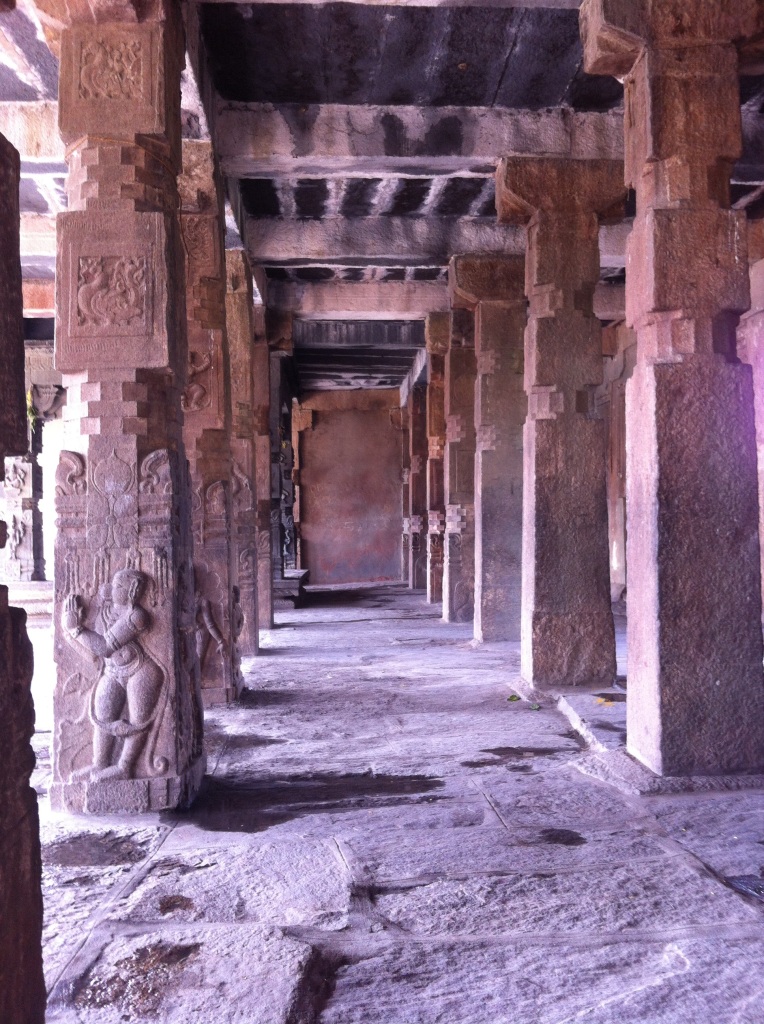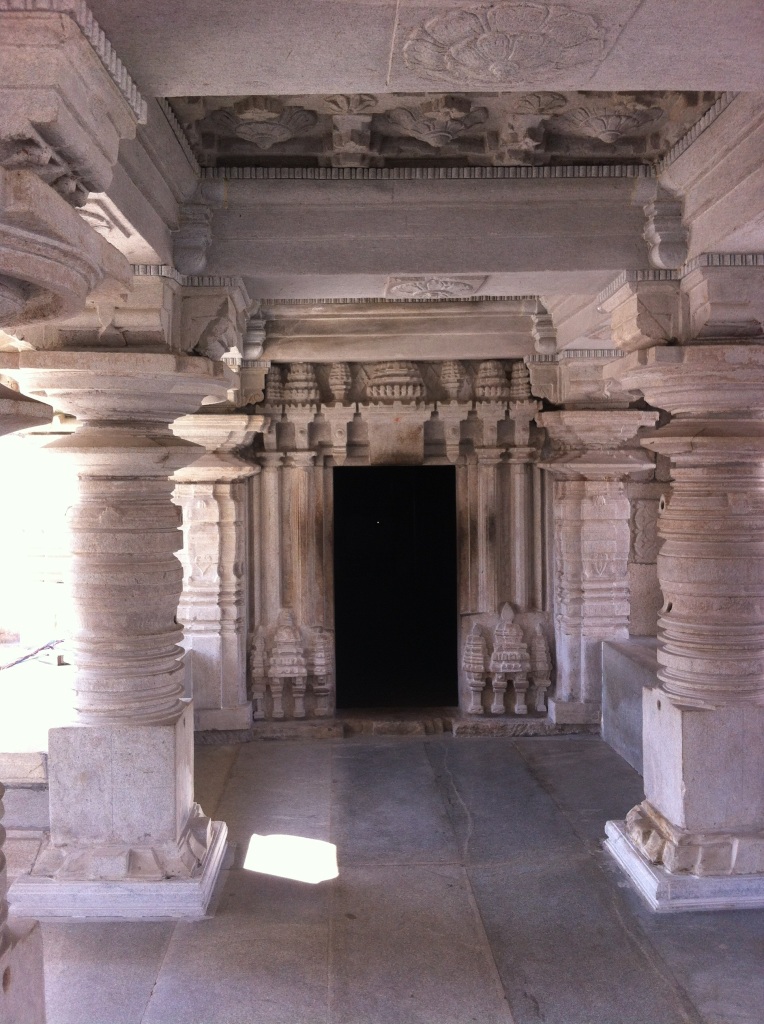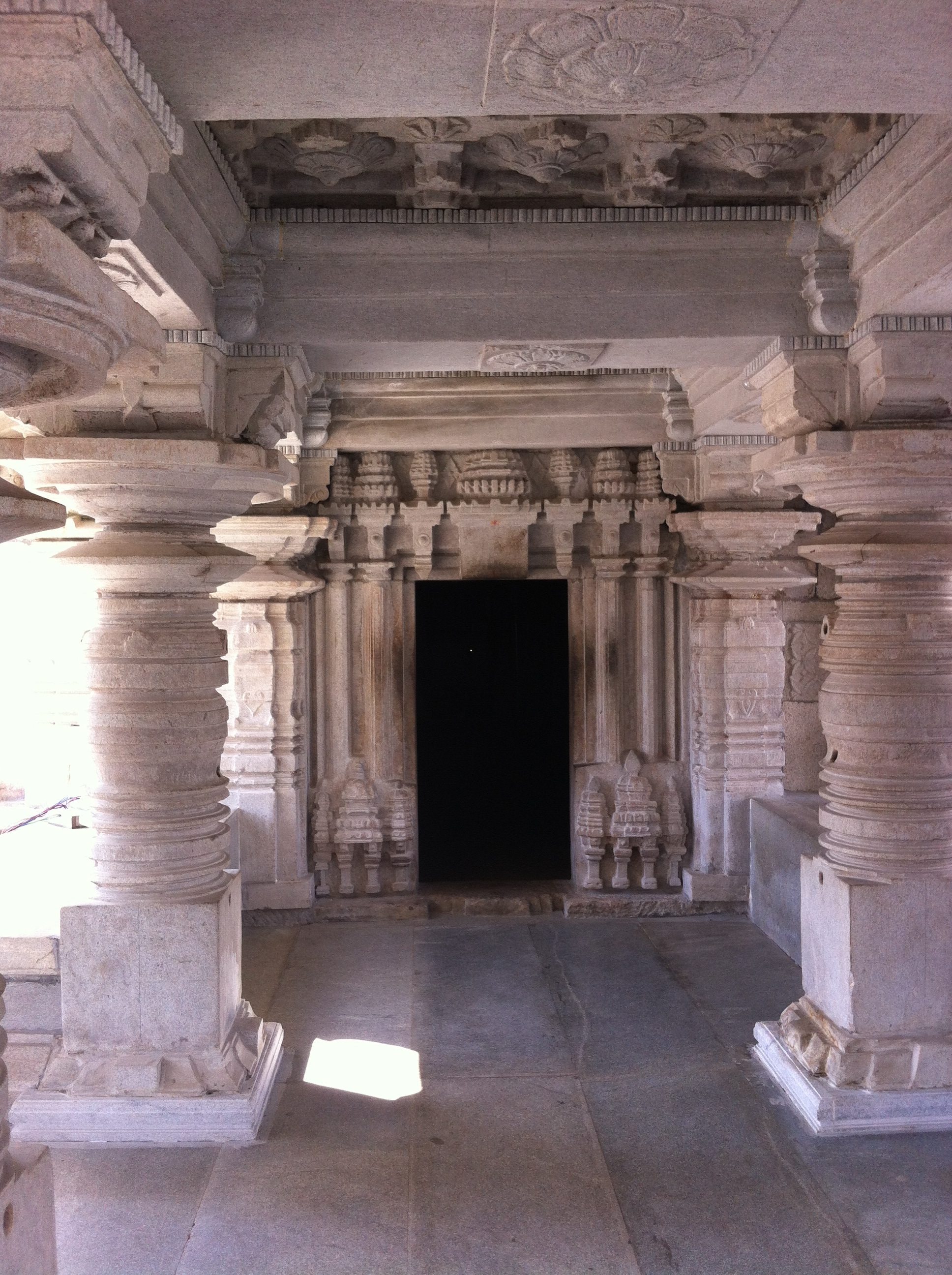Every morning I wake up, rub the sleep from my eyes, make a cup of coffee and try to practice Ashtanga Yoga. I start with a few hours of asana. I inhale and exhale, bending my body into different shapes and experiences, and hopefully removing some of the samskaras stuck between my joints. I try and I fail and sometime I fall flat on my face. And after the yoga rug is rolled up and the laundry is hanging out to dry, I keep trying to practice Ashtanga Yoga.
Because this yoga thing doesn’t end at the corners of my mat.
I’m attempting to allow the remnant feelings from the ritual of asana practice to spread like butter on bread throughout the rest of my day. I try to be nice. I try not to do harm. I try, through interactions with others and with myself, to practice Ashtanga Yoga. I try and I fail…

For the past few weeks in conference, between beautiful discussions about guru and mula bhanda, Sharath has continually brought our attention to the first two limbs: the Yamas and the Niyamas. (If you’re a Land Yoga student or following me on Instagram, you might have participated in or seen The All Eight Limbs Movement’s first few monthly focuses: the Yamas, where Lara invited us to share photos about non-violence, truth, non-stealing, energy conservation and non-greediness.)
He keeps coming back to this starting place. We can do all kinds of “yoga practices,” but if we don’t place attention on the first two limbs, the foundational pillars on which the rest of our practice is built, something big will be missing. So I’ve been spending a lot of time with them. Recognizing my failures and seeing my efforts…
“How will you know the depth of the sea if you continue to sail around on the surface?” Sharath asks, echoing one of his favorite analogies. “You have to dive in to know the beauty of the sea. Just like this you must apply all the Yamas and Niyamas to your practice in order to experience an in depth understanding. This process won’t happen suddenly…”

The Yamas are:
Ahimsa, non-violence:
Yoga Sutras 2.35 “As a Yogi becomes firmly grounded in non-violence (ahimsa), other people who come near will naturally lose any feelings of hostility.”
Being non-violent is important. Sharath says that our asana practice creates heat and strength, but it is important not to misuse the strength! Grounding ourselves with peaceful thoughts and actions off the mat is vital.
Satya, truth:
Yoga Sutras 2.36 “As truthfulness (satya) is achieved, the fruits of actions naturally result according to the will of the Yogi.”
We should be true to ourselves and to others.
Asteya, non-stealing:
Yoga Sutras 2.37 “When non-stealing (asteya) is established, all jewels, or treasures present themselves, or are available to the Yogi.”
Sharath reminds us that a yoga brand that steals postures to create its own yoga “style” is not practicing this yama!
Brahmacharya, celibacy or energy conservation:
Yoga Sutras 2.38 “When walking in the awareness of the highest reality (brahmacharya) is firmly established, then a great strength or vitality is acquired.”
Aparigraha, non-greediness:
Yoga Sutras 2.39 “When one is steadfast in non-possessiveness or non-grasping with the senses (aparigraha), there arises knowledge of the why and wherefore of past and future incarnations.”
The Niyamas are:
Shaucha, cleanliness:
Yoga Sutras 2.41 “Also through cleanliness and purity of body and mind (shaucha) comes a purification of the subtle mental essence (sattva), a pleasantness, goodness and gladness of feeling, a one-pointedness with intentness, the conquest or mastery over the senses, and a fitness, qualification, or capability for self-realization.”
This applies to internal thoughts and our external environment. Asana helps to clean the internal body, but we must also do our part: keep our mat, our clothes, our home and our thoughts clean. (Also, it’s important to shower before asana practice!)
Santosha, contentment:
Yoga Sutras 2.42 “From an attitude of contentment (santosha), unexcelled happiness, mental comfort, joy, and satisfaction is obtained.”
This niyama asks us to be happy. To be deeply, internally, happy and to think good thoughts and not compare ourselves to others or to what we don’t have. We should relish each moment in this human life and find happiness that comes from within! “Santosha does not come from the iPhone 6…because next week iPhone 7 is coming!” Most of our stress and delusion will melt away with the practice of santosha.
Tapas, discipline:
Yoga Sutras 2.43 “Through training of the senses (tapas), there comes a destruction of mental impurities, and an ensuing mastery or perfection over the body and the mental organs of senses and actions.”
This niyama is related to the Sadhana, the practice and leading a disciplined life. “Without discipline,” Sharath says, “it’s impossible to learn something.”
Svadhyaya, self study:
Yoga Sutras 2.44 “From self-study and reflection on sacred words (svadhyaya), one attains contact, communion, or concert with that underlying natural reality or force.”
Self-study is the art of doing internal research and putting effort into understanding what your teacher has told you. We should become a Sadaka, one who does Sadhana.
Ishvarapranidhana, surrender to the divine:
Yoga Sutras 2.45 “From an attitude of letting go into one’s source (ishvarapranidhana), the state of perfected concentration (samadhi) is attained.”
So we have our work cut out for us! These foundational concepts are deep and complex. I love hearing Sharath talk about them and reminding us of the well-rounded life we should aim to lead. Which is why I say each day I wake up and try to practice Ashtanga Yoga… Some changes have been easy for me, like maintaining a vegetarian diet based on ahimsa…others not so easy, like keeping a disciplined schedule.
What about you?
How are the yamas and niyamas working in your life?
What are you trying to practice?

if everyone would practice these Yamas and Niyamas, regardless if they are yogis, what a wonderful world this would be!